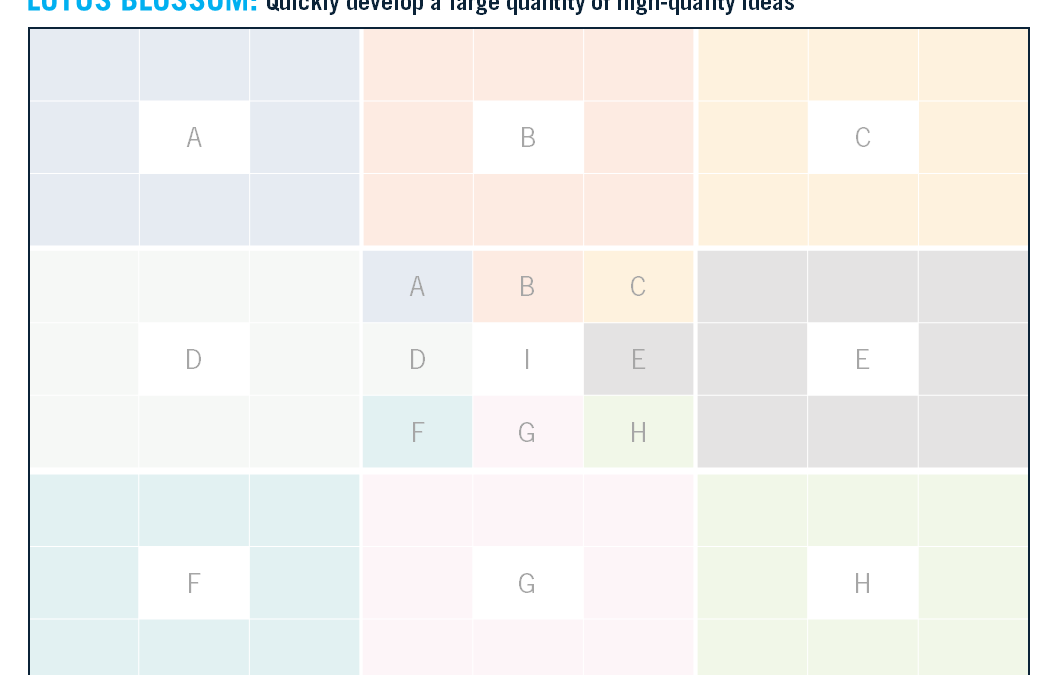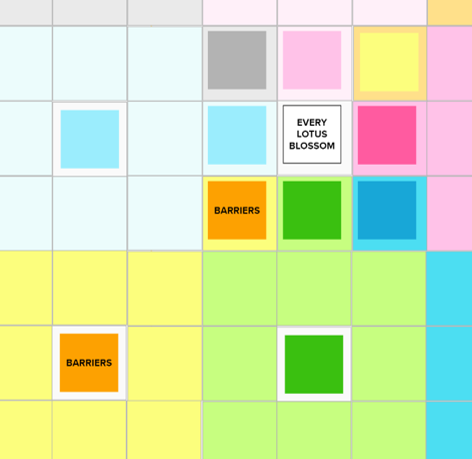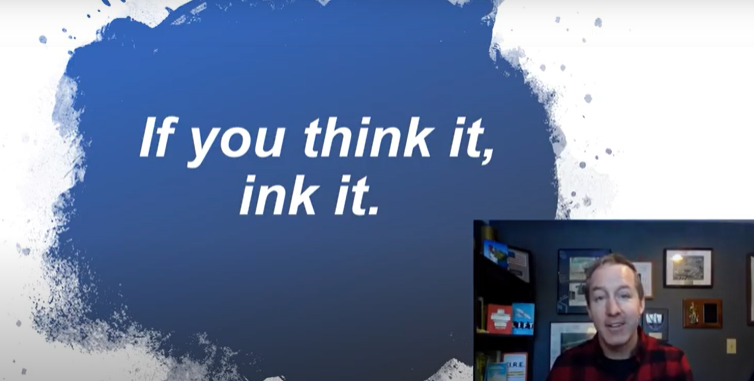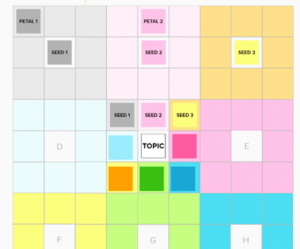
Blossom Explosion
This week’s blog post is by Jennifer Bristol
Preparation can take on many forms. A few months ago, I experienced what can happen when I am prepared for the facilitation but I have neglected to adequately prepare the participations.
The Innovation Tool Kit was designed to help teams think creatively, solve problems, and come up with unique solutions. This past summer, the ITK team designed a certification program for staff wishing to become certified in ITK and its methods. Prior to starting the official ITK training cohort, I decided to take a stab at using the lotus blossom with my project team split amongst 2 sessions. I split up into 2 in order to better manage the numbers of attendees, with each session being identical in the problem to be solved. It was obvious from the start that not everyone had used mural and there was limited exposure to sessions using the ITK tools. After a very brief introduction on mural and a lotus blossom activity overview, we dove right in. Chaos was the word that came to mind. The center square problem seemed to have been forgotten as thoughts that were not relevant ended up on the page.
This went on for a bit, I let them run with it until it reached a point that we were getting too far away from it the spirit of the session. I reminded them of the center problem to redirect and refocus. We then went through each of the newly created center seeds in the outer lotus blossoms and tried to get more clarity. In the end, the results that came out were helpful not just to me but other members of the team.
The second session was better in that some had more experience with the tools, and I had learned a little bit from the first session. I reinforced the objective before we began and throughout.
After the second session I had some time to reflect on what I would do differently. I was so wrapped up in making sure that I was prepared, knew mural, knew the ITK tool, etc. that I forgot about the people joining. Next time I would send in advance a link to mural so that the participations can practice and feel more comfortable with the tool, some details about lotus blossom (even if it is just the link on the ITK website), and the main objective of our session. I miscalculated the number of staff I thought would be familiar with the tools.
It would be beneficial to build an extra 5-10 minutes at the start of the session to do a mini mural activity so that attendees have some time to get familiar with creating a sticky, move stuff around, etc. Offering to have the participants “follow me” if they get lost is also a great option.
Moving forward I will make sure I look at preparation in all its forms.






